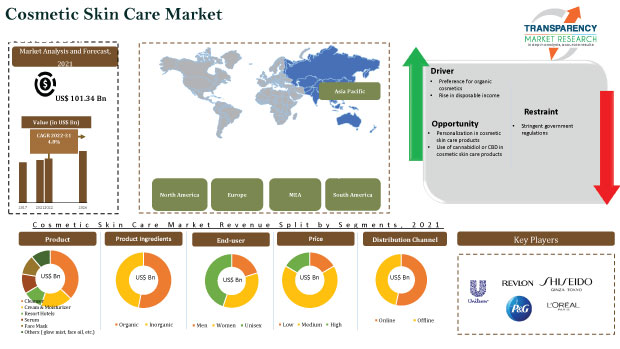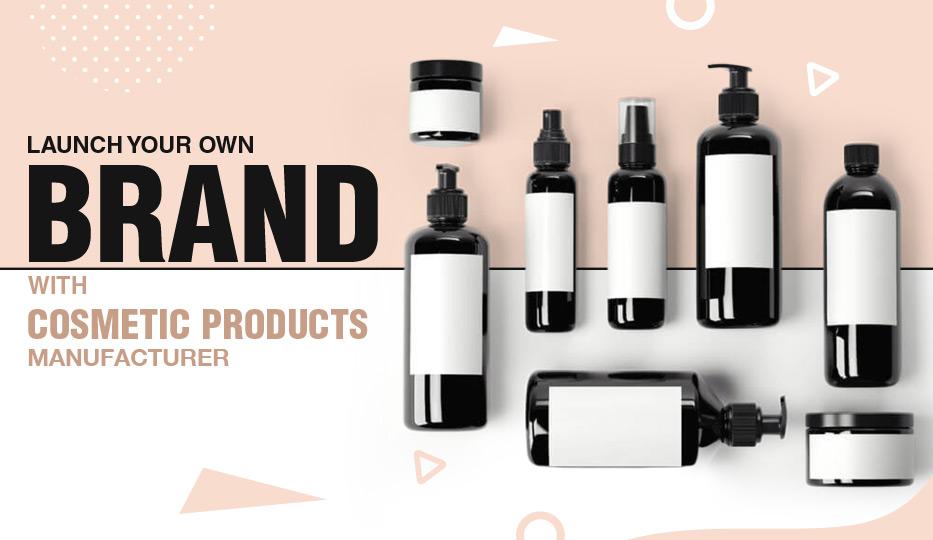The cosmetics industry is highly competitive, with new brands emerging regularly. To stand out and attract a loyal customer base, effective marketing strategies are essential. This guide provides an in-depth look into the best practices for marketing in the cosmetics industry.
1. Understanding the Cosmetics Market

The cosmetics market is diverse, encompassing skincare, makeup, haircare, and more. Understanding the market is crucial for developing targeted marketing strategies.
1.1 Market Segmentation
Segmentation involves dividing the market into distinct groups based on factors such as age, gender, and preferences. This allows for more personalized and effective marketing campaigns.
1.1.1 Demographic Segmentation
Demographic segmentation focuses on characteristics such as age, gender, income level, and education. This helps in tailoring products and marketing messages to specific groups. For example, anti-aging products might target an older demographic, while vibrant makeup could appeal to younger audiences.
1.1.2 Psychographic Segmentation
Psychographic segmentation considers lifestyle, values, and personality traits. Understanding these aspects can help create campaigns that resonate more deeply with consumers. For instance, eco-friendly products may appeal to environmentally conscious consumers.
1.2 Consumer Behavior Analysis
Analyzing consumer behavior helps in understanding what drives purchasing decisions. Factors such as social media influence, product reviews, and brand reputation play significant roles.

1.2.1 Social Media Influence
Social media platforms are a major influence on consumer behavior in the cosmetics industry. Users often look to influencers and peers for product recommendations. Engaging content and authentic reviews on platforms like Instagram and TikTok can significantly impact purchasing decisions.
1.2.2 Product Reviews
Product reviews, both on e-commerce platforms and social media, greatly influence consumer choices. Positive reviews can boost credibility and drive sales, while negative reviews need to be addressed promptly to maintain trust.
1.3 Competitive Analysis
Understanding your competitors and their strategies can provide insights into what works and what doesn't. It helps in identifying gaps in the market that your brand can fill.
1.3.1 SWOT Analysis
Conducting a SWOT (Strengths, Weaknesses, Opportunities, Threats) analysis of competitors helps in understanding their strengths and weaknesses. This information can be used to differentiate your brand and capitalize on market opportunities.
1.3.2 Trend Analysis
Keeping an eye on industry trends is crucial for staying competitive. Trends such as clean beauty, personalized skincare, and virtual try-ons are currently gaining traction in the cosmetics market.
2. Digital Marketing Strategies
Digital marketing is vital in today's world. It encompasses various online platforms and tools to reach a wider audience.
2.1 Social Media Marketing
Social media platforms like Instagram, Facebook, and TikTok are powerful tools for reaching potential customers. Using these platforms effectively can significantly increase brand visibility.
2.1.1 Instagram Strategies
Instagram is a visual platform perfect for showcasing cosmetics. Utilize high-quality images, engaging stories, and IGTV for tutorials and behind-the-scenes content. User-generated content and influencer partnerships can also drive engagement.
2.1.2 TikTok Trends
TikTok's short-form video format is ideal for creating viral content. Participate in trending challenges, use popular hashtags, and collaborate with TikTok influencers to reach a broader audience.
2.2 Influencer Marketing
Collaborating with influencers who align with your brand values can boost credibility and reach. Influencers can provide authentic reviews and recommendations to their followers.

2.2.1 Micro-Influencers vs. Macro-Influencers
Micro-influencers (10k-100k followers) often have higher engagement rates and more niche audiences, while macro-influencers (100k+ followers) offer broader reach. Choose influencers based on your campaign goals.
2.2.2 Authentic Partnerships
Ensure partnerships feel authentic. Influencers should genuinely like and use your products, as their followers can easily detect inauthentic promotions.
2.3 Content Marketing
Creating valuable content such as tutorials, blog posts, and videos can engage your audience and establish your brand as an authority in the industry.
2.3.1 Educational Content
Educational content, like skincare routines or makeup tutorials, positions your brand as an expert. This builds trust and encourages consumers to try your products.
2.3.2 Interactive Content
Interactive content such as quizzes ("Find Your Perfect Foundation Shade") and live Q&A sessions can boost engagement and provide personalized experiences for consumers.
3. Product Launch Strategies

Launching a new product requires meticulous planning and execution to generate buzz and drive sales.
3.1 Pre-Launch Marketing
Building anticipation through teasers and sneak peeks can create excitement. Utilize social media, email marketing, and influencer collaborations to spread the word.
3.1.1 Teasers and Sneak Peeks
Share behind-the-scenes content and product teasers on social media to create anticipation. Use countdowns and interactive polls to engage your audience.
3.1.2 Influencer Collaborations
Partner with influencers for exclusive pre-launch content. Their followers can provide valuable feedback and help create a buzz around your new product.
3.2 Launch Event
Hosting a launch event, either online or offline, can create a memorable experience for your audience. It provides an opportunity to showcase the new product and interact with potential customers.

3.2.1 Virtual Launch Events
In the digital age, virtual launch events have become popular. Use platforms like Instagram Live or Zoom to host interactive events, including product demonstrations and Q&A sessions.
3.2.2 In-Person Events
For in-person events, create immersive experiences that allow attendees to try products and engage with the brand. Offer samples, discounts, and exclusive merchandise to make the event memorable.
3.3 Post-Launch Follow-Up
After the launch, continue engaging with your audience by seeking feedback and encouraging reviews. This helps in building long-term relationships with customers.
3.3.1 Feedback Collection
Collect feedback through surveys, social media, and direct customer interactions. Use this feedback to improve future products and customer experiences.
3.3.2 Encouraging Reviews
Encourage satisfied customers to leave reviews on your website and social media. Positive reviews enhance credibility and influence potential buyers.
4. Brand Storytelling
Telling your brand's story can create an emotional connection with your audience.
4.1 Authentic Brand Narrative
Sharing the story behind your brand, its values, and mission can resonate with consumers. Authenticity is key to building trust and loyalty.
4.1.1 Founder's Story
Share the founder's journey and inspiration behind the brand. This personal touch can create a deeper connection with the audience.
4.1.2 Brand Values
Highlight your brand's core values, such as sustainability, inclusivity, or innovation. Aligning with these values can attract like-minded consumers.
4.2 Visual Storytelling
Utilize images and videos to convey your brand's story. Visual content can be more engaging and memorable for the audience.

4.2.1 Behind-the-Scenes Content
Share behind-the-scenes footage of product development, team activities, and company events. This transparency builds trust and showcases the human side of your brand.
4.2.2 Customer Stories
Featuring stories from satisfied customers can add credibility and humanize your brand. Encourage customers to share their experiences with your products
5. Measuring Marketing Effectiveness

Tracking the effectiveness of your marketing strategies is crucial for continuous improvement.
5.1 Key Performance Indicators (KPIs)
Identify relevant KPIs such as engagement rates, conversion rates, and customer acquisition costs to measure success.
5.1.1 Engagement Rates
Track metrics like likes, shares, comments, and video views to measure how well your content is engaging your audience. High engagement rates indicate that your content is resonating with your target audience.
5.1.2 Conversion Rates
Measure the percentage of website visitors who complete a desired action, such as making a purchase or signing up for a newsletter. This helps in assessing the effectiveness of your marketing campaigns in driving sales.
5.2 Analytics Tools
Utilize tools like Google Analytics and social media insights to track performance. These tools can provide valuable data to refine your strategies.
5.2.1 Google Analytics
Google Analytics provides in-depth insights into website traffic, user behavior, and conversion rates. Use this data to identify areas for improvement and optimize your marketing efforts.
5.2.2 Social Media Analytics
Social media platforms offer analytics tools that provide insights into audience demographics, engagement, and content performance. Use these insights to tailor your social media strategy.
5.3 Customer Feedback
Collecting and analyzing customer feedback can provide insights into what works and what needs improvement. Regularly engage with your audience to understand their needs and preferences.

5.3.1 Surveys and Polls
Use surveys and polls to gather feedback from your customers. This can provide valuable insights into their preferences, satisfaction levels, and areas for improvement.
5.3.2 Social Listening
Monitor social media conversations and mentions of your brand to understand public perception and identify potential issues early. Engaging with customers through social listening can enhance your brand's reputation.
5. Sustainability and Ethics in Marketing
Consumers today are increasingly conscious of sustainability and ethical practices. Highlighting your brand's commitment to these values can attract a loyal customer base.
6.1 Eco-Friendly Packaging
Using sustainable packaging materials and reducing waste can appeal to eco-conscious consumers. Highlight your efforts in marketing campaigns.
6.1.1 Biodegradable Materials
Switch to biodegradable and recyclable packaging materials. Share the environmental benefits and your commitment to reducing waste.
6.1.2 Minimalist Packaging Design
Adopt minimalist packaging designs to reduce material usage and waste. Communicate these efforts to your audience to emphasize your brand's commitment to sustainability.
6.2 Ethical Sourcing
Ensure that your ingredients are ethically sourced and cruelty-free. Transparency in your sourcing practices can build trust with your audience.
6.2.1 Fair Trade Ingredients
Use fair trade ingredients to support ethical practices and fair wages for workers. Highlight these efforts in your marketing to appeal to socially conscious consumers.
6.2.2 Cruelty-Free Certification
Obtain cruelty-free certification for your products and prominently display this on your packaging and marketing materials. This assures consumers of your commitment to ethical practices.
6.3 Corporate Social Responsibility
Engage in social and environmental initiatives. Share your brand's contributions to these causes in your marketing efforts.
6.3.1 Community Engagement
Participate in community engagement activities such as local clean-up drives, donations, and awareness campaigns. Showcase these activities to demonstrate your brand's commitment to social responsibility.
6.3.2 Environmental Initiatives
Implement and promote environmental initiatives such as reducing carbon emissions, water conservation, and supporting reforestation projects. Sharing these efforts can enhance your brand's reputation and appeal to environmentally conscious consumers.
Final Thoughts
Effective marketing in the cosmetics industry requires a mix of creativity, strategic planning, and continuous improvement. By understanding your market, using helpful AI tools, and staying true to your brand values, you are on your way to be a successful fashion entrepreneur.


